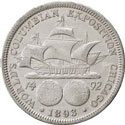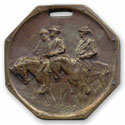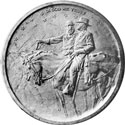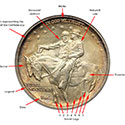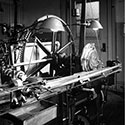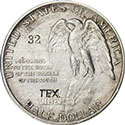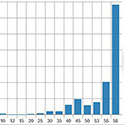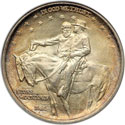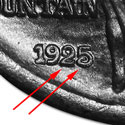
Stone Mountain
Commemorative Half Dollar
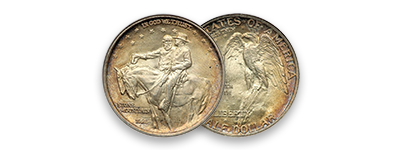
Obverse Dies
The Coin
Original Design
Modifications
Final Design
Production
A Tale of Five A's
Variations
Obverse Dies
Reverse Dies
Harvest Campaign
Counterstamp
Varieties
All three major third party grading services have long recognized the existence of a doubled obverse die. We have already verified through purchases that the doubled die recognized by each service varies and does not always agree with the defined obverse double die.
Double Die Obverse FS-101 (FS-001)
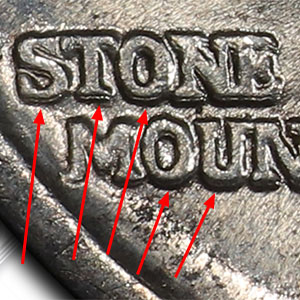
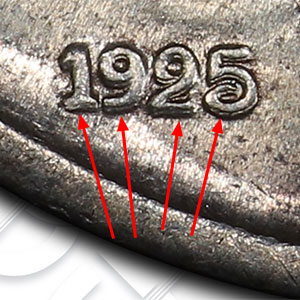 When any grading service designates a coin as a "Double Die Obverse" this is the classification it is given. The designation originates with the numbering system devised by Bill Fivaz and J. T. Stanton in the "Cherrypicker's Guide to Rare Die Varieties." FS-101 is the new designation and with FS-001 now obsolete. But we are discovering several different obverse double die varieties, so which one if the one listed in the "Cherrypicker's Guide?"
When any grading service designates a coin as a "Double Die Obverse" this is the classification it is given. The designation originates with the numbering system devised by Bill Fivaz and J. T. Stanton in the "Cherrypicker's Guide to Rare Die Varieties." FS-101 is the new designation and with FS-001 now obsolete. But we are discovering several different obverse double die varieties, so which one if the one listed in the "Cherrypicker's Guide?"
The coin is described as "Strong doubling on the date and STONE MOUNTAIN." We have several examples of this variety, but also when it is paired with a doubled reverse. So we know this obverse die was used with more than one reverse die. These images are from PCGS 34061487, an MS65 DDO/DDR example.
DDO - Doubled 25
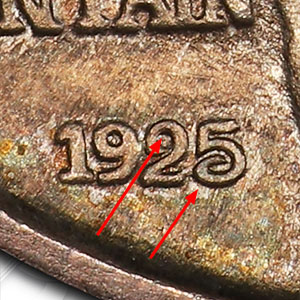 The 25 is doubled across the lower edge of both numerals but not doubled elsewhere. There is no other doubling on the obverse. This example is PCGS 11867289, an MS65 graded coin.
The 25 is doubled across the lower edge of both numerals but not doubled elsewhere. There is no other doubling on the obverse. This example is PCGS 11867289, an MS65 graded coin.
DDO - Doubled 25, Doubled STONE, Doubled Little Sorrel
The 25 is doubled can best be seen as surface doubling on the 25 and the word STONE is also doubled on the surface. Little Sorrel shows doubling only on the forehead as a single line. This example is PCGS 21025455, an MS 66 graded coin.
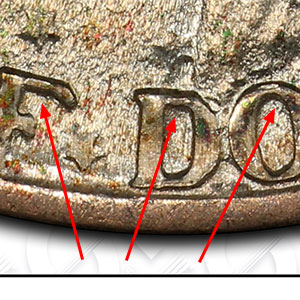
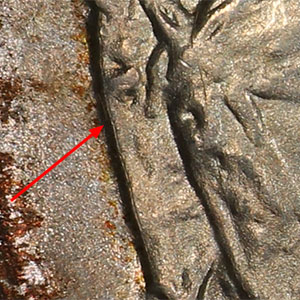
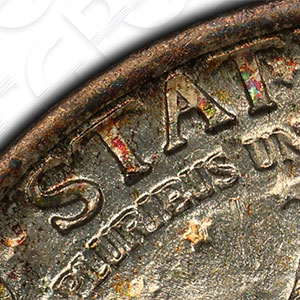
DDO - Doubled 25, Doubled Little Sorrel, Rim Cud Top Left
The date is doubled on the 2 and 5 on the surface and the 19 is starting to show some pitting. The front of Little Sorrel's head has the familiar doubling but it is flat in appearance. There is some rim cud showing across the top of the die and indications of repolishing to extend the die life. This example is from PCGS 34696741, an MS65+.



Normal Die, Rim Cud Top Left
The only issue we can find is that there is some rim cud around 11 o'clock which would indicate a failing die at the rim. So was this a new die experiencing failure almost as it entered service? This example is PCGS 81303404, an MS65.
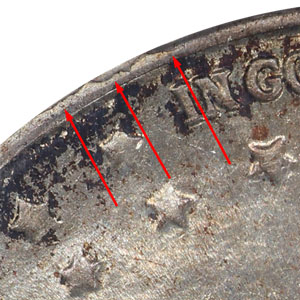
Legal Stuff
Home
History
Our Collection
Exonumia
The Coin
Original Design
Modifications
Grading
Price Guide
The Carvers
Contact Us
The Carving
Coins by Grade
Sources
Commemoratives
Statistics
Variations
Final Design Issues
Production
Harvest Campaign
Copyright (c) Georgia 1832,LLLP 2018-2018
